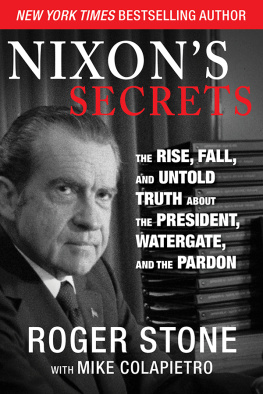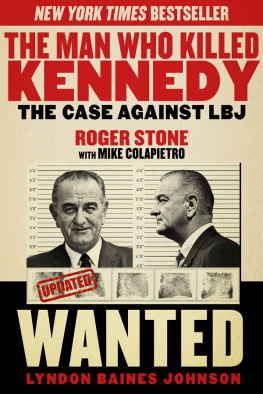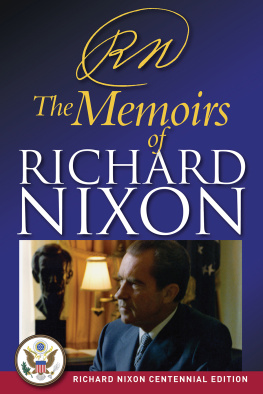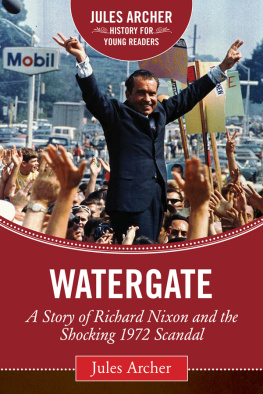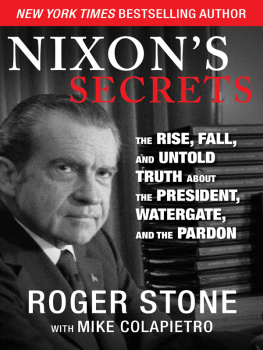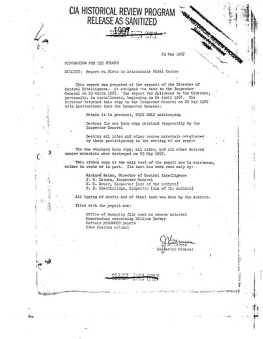Copyright 2014 by Roger Stone with Mike Colapietro
All rights reserved. No part of this book may be reproduced in any manner without the express written consent of the publisher, except in the case of brief excerpts in critical reviews or articles. All inquiries should be addressed to Skyhorse Publishing, 307 West 36th Street, 11th Floor, New York, NY 10018.
Skyhorse Publishing books may be purchased in bulk at special discounts for sales promotion, corporate gifts, fund-raising, or educational purposes. Special editions can also be created to specifications. For details, contact the Special Sales Department, Skyhorse Publishing, 307 West 36th Street, 11th Floor, New York, NY 10018 or .
Skyhorse and Skyhorse Publishing are registered trademarks of Skyhorse Publishing, Inc., a Delaware corporation.
Visit our website at www.skyhorsepublishing.com.
10 9 8 7 6 5 4 3 2 1
Library of Congress Cataloging-in-Publication Data is available on file.
Print ISBN: 978-1-62914-603-4
Printed in the United States of America
To my beloved wife, Nydia, who supports me when I am right and when I am wrong, and my beloved dogs, Milhous, Taft, Dewey, Pee Wee, Buster, and Oscar. All noble dogs.
CONTENTS
ACKNOWLEDGMENTS
Anyone writing a book about Richard Nixon is blessed with an abundance of sources. The most durable figure in American politics in the twentieth century, Nixon has been the subject of fascination and public debate for six and a half decades. The literature runs the gamut from devastating psychological profiles such as Fawn M. Brodies Richard Nixon: The Shaping of His Character and Arthur Woodstones Nixons Head , which can find no redeemable qualities in Nixon, and Lord Conrad Blacks Richard M. Nixon: A Life in Full , which can find no fault in the man.
In order to grasp the full scope of Nixon and to carefully balance both his attributes and his faults, one must delve deeply into the literature on our thirty-seventh president. William Safires Before the Fall is required reading for anyone who wants to understand Nixon, as is Raymond K. Prices With Nixon . The three-volume biography of Nixon by historian Stephen Ambrose presents a fine and balanced portrait of Nixon and his times. The fact that Ambrose wrote an excellent multivolume biography of Dwight Eisenhower gave Ambrose additional insight into the complicated relationship between Ike and Dick. The New York Times reporter Tom Wickers One of Us has the same balance and perspective.
I am particularly indebted to Nixon law partner Leonard Garment for his iconoclastic view of Nixon as reflected in Crazy Rhythm and In Search of Deep Throat: The Greatest Political Mystery of Our Time .
Jules Witcover is perhaps the best reporter on the 1968 campaign with his much overlooked The Year the Dream Died , his The Resurrection of Richard Nixon, and his more recent Very Strange Bedfellows: The Short and Unhappy Marriage of Richard Nixon and Spiro Agnew . Witcovers shrewd insights and eye for color make him one of the best political reporters of our time.
Generally speaking, the books by Theodore White on US presidential elections are close to worthless. White, an affable man, was mesmerized by the stylish and dashing John Kennedy. White in his seminal The Making of the President, 1960 would weave a narrative in which Kennedy is a star and Nixon is a black-hatted villain. White bought into JFKs expensively promoted image of style, grace, and intellectualism. Kennedys young and carefully dressed wife and his beautiful young children were part of the mystique. White wondered why the Nixon entourage would treat him coolly when he joined the Nixon campaign tour wearing a Kennedy button. Fortunately three authors have written retrospectives on the 1960 campaign, which put the photo-finish election in better perspective. First among these is David Pietruszas 1960LBJ vs. JFK vs. Nixon: The Epic Campaign That Forged Three Presidencies . Also invaluable for a more balanced assessment of that race is Professor Edmund F. Kallina Jr.s Kennedy v. Nixon: The Presidential Election of 1960, although the good professor underestimates the important role of organized crime in stealing votes for Kennedy. The Kennedy Brothers by former Arizona Secretary of State Richard D. Mahoney is the definitive account of the efforts of the Chicago mob to intimidate voters in that city as well as the mobs earlier role in the West Virginia primary. Also required reading for a better understanding of the 1960 election is W. J. Rorabaughs The Real Making of the President.
Because of the circumstances of his death and the effects on him by his brothers assassination, public awareness of Robert F. Kennedy is more vague today. Because of Robert Kennedys tactics in the 1960 election, he is an extraordinary factor in the Nixon narrative. I relied upon the aforementioned The Kennedy Brothers by Richard D. Mahoney as well as Jeffrey K. Smiths Bad Blood: Lyndon B. Johnson, Robert F. Kennedy, and the Tumultuous 1960s and Jeff Shesols Mutual Contempt: Lyndon Johnson, Robert Kennedy and the Feud that Defined a Decade . Robert Kennedy was among the most ruthless political operators of the 1960s, a fact you wont find in Arthur Schlesingers Robert Kennedy and His Times .
Pulitzer Prizewinning reporter J. Anthony Lukas, in his stunning book Nightmare: The Underside of the Nixon Years, bores in on several areas of Watergate and the Nixon administration where knowledge is scant, includingthe role of Robert Bennett and his CIA front the Mullen Company in the break-in, the 196971 wire tapping on Nixons aides, the Howard HughesNixon relationship, the Saturday night massacre, and the connection between the Watergate break-in and a high-end house of prostitution operating out of the Columbia Plaza Apartments only blocks from the Watergate.
Although most Nixon loyalists heap abuse on investigative journalist Anthony Summers book The Arrogance of Power: The Secret World of Richard Nixon , I found it both fascinating and readable. Don Fulsoms Nixons Darkest Secrets has an agenda but is also valuable. The reporting of Dan E. Moldea is invaluable, particularly regarding Nixons long and complicated relationship with Teamster leader James Jimmy Hoffa.
I am, however, particularly indebted to four ground-breaking journalists who have had the courage and tenacity to examine the accepted Watergate narrative and poke substantial holes in it. Secret Agenda by Jim Hougan is the important first cut at permeating the many falsehoods the public accepts about Watergate.
In their book Silent Coup , Leonard Colodny and Robert Gettlin advanced the narrative first uncovered by Hougan. Working with Tom Shachtman, Colodnys Forty Years War outlined in graphic detail the foreign policy hard-liners attempts to undo Nixons policy of dtente. Fox News White House Correspondent James Rosens biography of Nixon Attorney General John N. Mitchell, The Strong Man , fifteen years in the writing, is a vital corrective for many of the myths of Watergate. A must-read is also veteran journalist Phil Stanfords White House Call Girl, which breaks important new ground in the Watergate narrative.
The public can more accurately understand what really transpired in Watergate through the writing and scholarship of former White House lawyer Geoff Shepard, who has exhaustively examined the words and actions of former White House Counsel John Dean and has written a devastating critique of Deans most recent book, The Nixon Defense . This analysis is included in this volume as Appendix 5.

